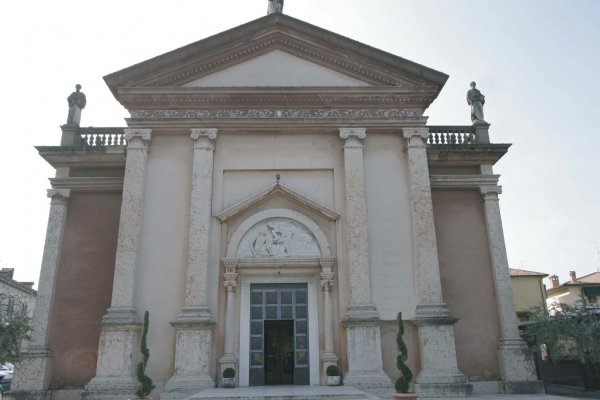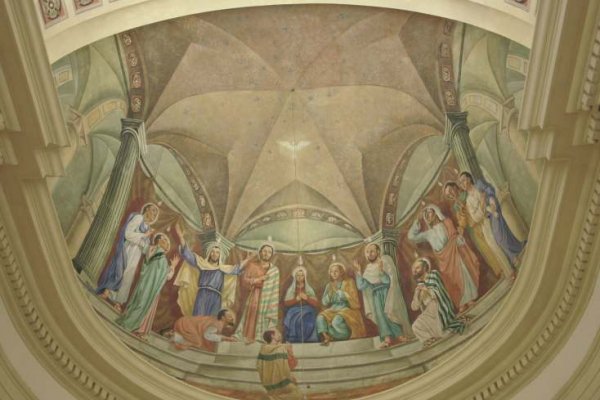The church of San Martino Vescovo in Peschiera del Garda
In the center of Peschiera del Garda, in honor of our Patron Saint
The parish church of San Martino Vescovo in Peschiera del Garda is located in the heart of our city, in the historic center, and is one of the oldest churches in the diocese of Verona.
The parchments that mention it date back to the first half of the 11th century. In that period Peschiera (the ancient Arilica) was a thriving village dedicated to fishing and commerce.
In one of these parchments, dated 8 December 1008, which tells us that Peschiera was the seat of the "Collegiate Pieve di San Martino" whose deacon was Dominico ("De plebe S. Martini sita in vico Piscaria"). This parish was equipped with two wooden fish ponds belonging to the monastery of San Zeno, which had been donated by Charlemagne in 878.
In the 15th century the church was remodeled and in 1454 that of Peschiera was already a “parish church with archpriest”.
In the 19th century, there were two cemeteries on either side of the church, one for civilians and one for the military. These cemeteries were abolished with the Napoleonic law of 1810 (the year in which the Municipality procured the land for the Frassino cemetery).
But that was not the only upheaval of the Napoleonic period of Peschiera, which began in 1796 with the occupation of the stronghold of Peschiera. Among the measures adopted by the French, in fact, there was also the closure of the parish church to worship (with the performance of religious functions in the Church of the Discipline) to use the building as a hospital and military warehouse.
In 1812 the evacuation of the temple took place which was rededicated in 1814. Unfortunately, however, the building was unsafe and badly suited to religious rites, so the government authority decided to tear it down. The pastor of the time, Don Vincenzo Fusina, promised to rebuild it.
From a report requested by the Bishop of Verona to the parish priest in anticipation of a pastoral visit (year 1815), we know that the ancient facade of the religious building was on the opposite side from the current one: that is, facing the current rectory, then not existing.
The new construction was finished in 1822 and except for some changes is what we see today.
The bombing of 1848 (Wars of Independence) caused damage to the bell tower which was later repaired. The new facade, on the other hand, with its current layout was built around 1933, while Don Giuseppe Lenotti was parish priest.
In 1966, major renovations were carried out inside and on the facade.
In December 2008 the church reopened its portal after the careful restoration of the frescoes and decorative elements and the adaptation of the electrical and heating systems.


